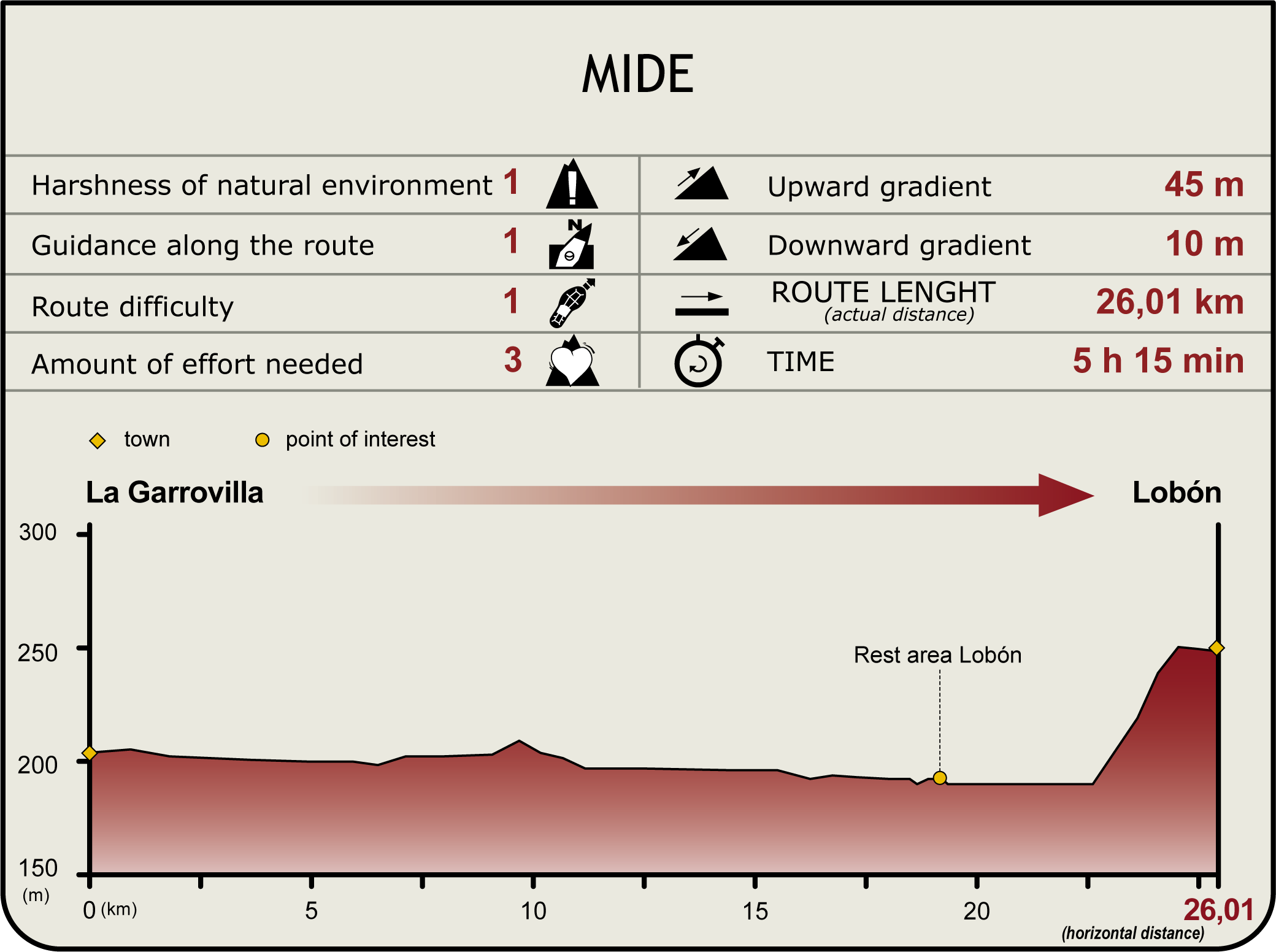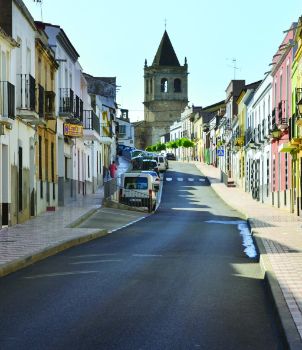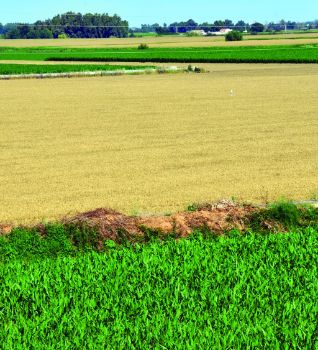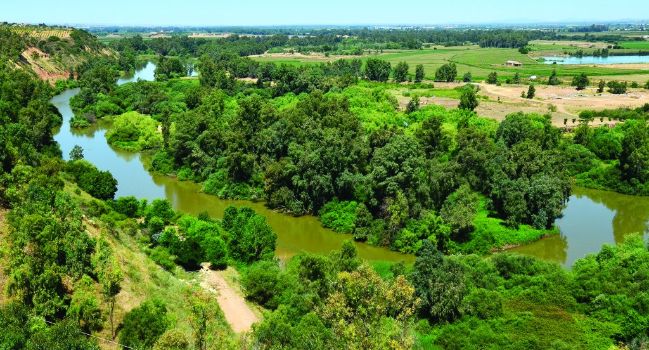Net of Natural
Trails

Stage 33: La Garrovilla - Lobón
Description
Through the Vegas Bajas of the Guadiana
The Stage runs on a paved road along the Lobón Canal, through the lower plains of the Guadiana, flanked by cornfields. The region’s emblematic bird is the White Stork, although other migratory birds abound.

The Stage starts at La Garrovilla, and runs on paved and dirt roads suitable for hiking and cycling. The route passes under the railway line through a conveniently marked tunnel.
The next hurdle is Montijo Canal, which the route crosses via a bridge shared with motorised vehicles; therefore, caution should be exercised. The path turns right immediately after the bridge, and continues along the Montijo Canal road, past the intersection with the BA-H-5089, which emerges to the right of the route. Soon after, there is a sign indicating the road to Lobón to the right.
About 50 m further on is a ford across the River Guadianilla. A sign posted by the Guadiana River Authority warns of the danger of flooding in the rainy season. The Stage continues along paved roads flanked by irrigated orchards. About 1.5 km after the ford, it turns right onto the Lobón Canal road. After 1.5 km, it takes a sharp turn to the left towards the A-5 motorway at a signposted intersection.

The route crosses a bridge over the River Guadiana and continues ahead until it reaches the motorway, along which it runs parallel for about 1.5 km. It is worth recalling that the River Guadiana is the backbone of this route. The river is the axis around which revolves the daily life in these centuries-old towns, and even in the modern ones that depend on agriculture as their main source of livelihood. Its banks are populated with a peculiar vegetation used by birds and otters (Lutra lutra) as habitat.
The route now passes under the A-5 motorway via a sloped tunnel, which may be difficult to traverse. Caution should be exercised. This tunnel is also used by local livestock.
The Stage winds through irrigated fields and easy paved roads with little motorised traffic. One may even catch a glimpse of White Storks (Ciconia ciconia) and wintering Common Cranes (Grus grus) in the harvested fields.
At the intersection near the River Guadiana, the paved road becomes a dirt track that traverses through the dehesas of Casas Blancas and El Potril. Here is the Lobón Rest Area, with a catch-and-release fishing zone, where the locals organise different events. The rest area is located at a site known as Casas de Isla Cerrada.

The Trail continues along a dirt road towards the intersection with the EX-328, and the access road to Lobón, which passes under the bridge on the River Guadiana. The stretch shared by Sections 33 and 34, which leads in and out of Lobón, starts here. The route runs through municipal market gardens until it reaches a livestock tunnel that crosses under the A-5 motorway.
The Stage continues to climb up towards an unmarked viewpoint, and then turns and heads towards a petrol station and the crossing over the A-5. The Trail crosses the bridge over the motorway, which is the road leading to Lobón, the endpoint of this Stage.
Sites of interest
Profile

Highlights
Further information
Lobón
Located on a hillock, it is known as "Extremadura's Balcony", from where one can view most of the Vegas Bajas County.
Several Bronze Age necropoleis, and the nearby Pijotilla archaeological site attest to human activity since prehistoric times. Romans and Arabs inhabited these lands until they fell under the control of the Order of Santiago. Lobón has belonged to the Orders of Santiago and Templars, Philip II and Houses of Montijo and Medinaceli. Owing to is strategic position, it has witnessed multiple wars against Portugal.
The first references to the Gothic-Mudejar Church of Santa María, of Templar origin, date back to the late fifteenth century. It has a single, stone-and-brick nave that is today a whitewashed building. Worthy of mention is the Chapel of San Juan Bautista by Francisco Morato, a Portuguese sculptor. He is credited with creating an altarpiece with an impressive statue of St. John in the first third of the seventeenth century.
This town has been identified as the Greco-Roman town of Lycon, destroyed by the Portuguese in 188 B.C. Its Arab castle played an important role in the battles between Almohads and Christians, Spaniards and Portuguese, and even between Isabella the Catholic and Juana la Beltraneja (15th c.). Today, only a few remains of the structure still can be seen.






